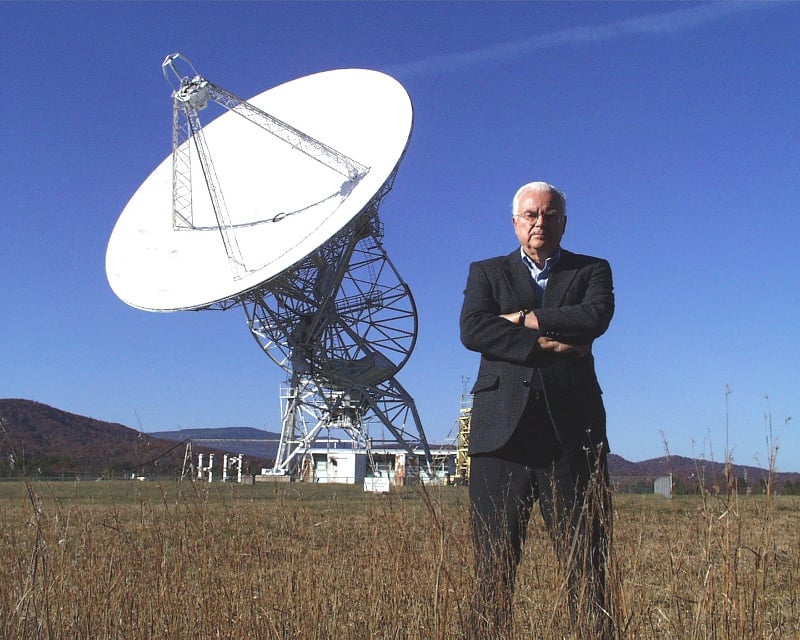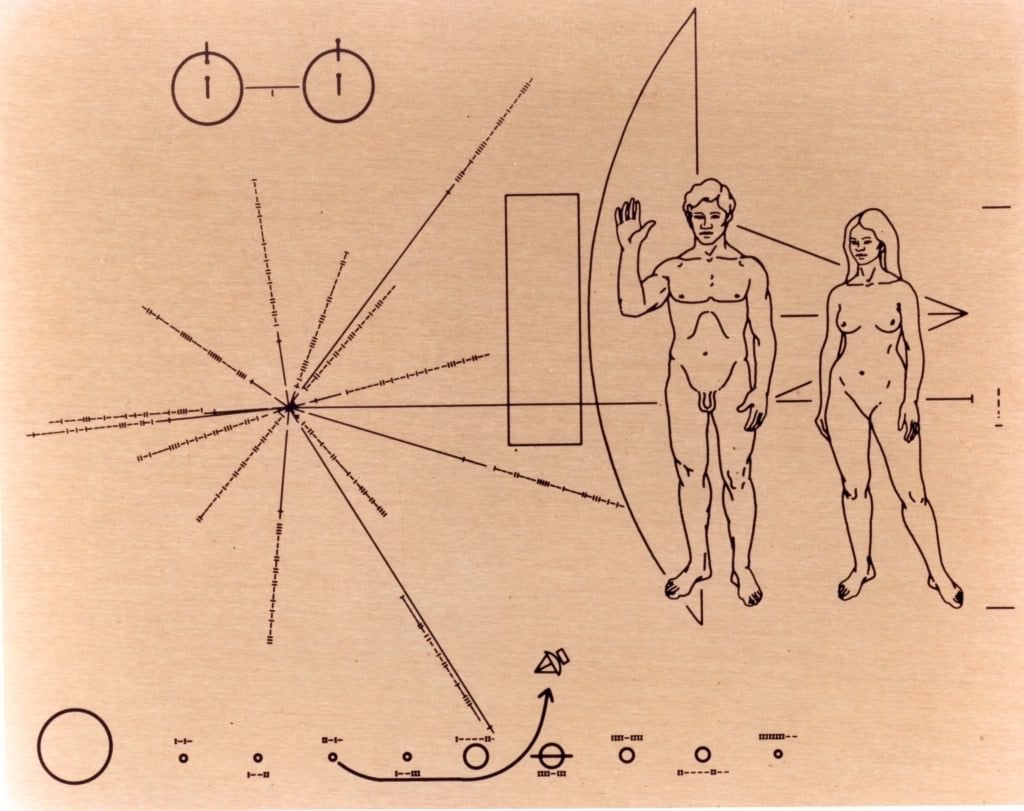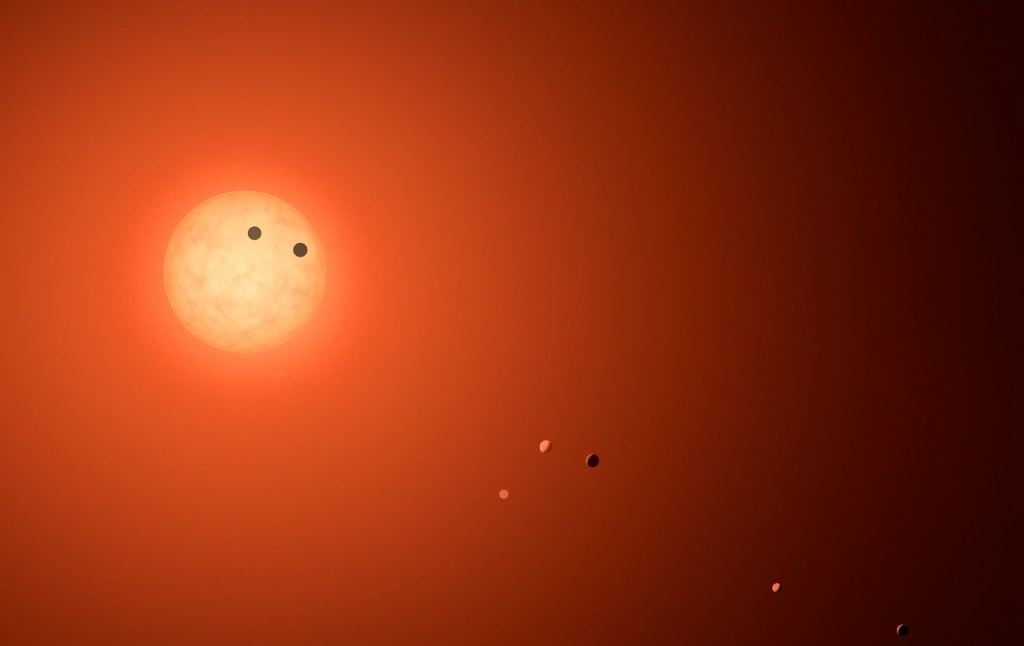The Robert C. Byrd Green Bank Telescope (GBT), part of the Green Bank Observatory in West Virginia, is the world's premiere single-dish radio telescope. Between its 100-meter dish (328-foot), unblocked aperture, and excellent surface accuracy, the GBT provides unprecedented sensitivity in the millimeter to meter wavelengths - very high to extremely high frequency (VHF to EHF). Since 2017, it also became one of the main instruments used by Breakthrough Listen and other institutes engaged in the Search for Extraterrestrial Intelligence (SETI).
Recently, an international team of researchers from the SETI Institute, Breakthrough Listen, and multiple universities scanned twelve exoplanets for signs of technological activity (aka. "technosignatures"). Their observations were timed to coincide with the planets passing in front of their sun relative to the observer (i.e., making a transit). While the survey did not detect any definitive evidence of technosignatures, they did identify two radio signals of interest that warrant follow-up observation. This new technique could vastly expand the field of SETI and create all kinds of opportunities for future research.
The team was led by Dr. Sofia Z. Sheikh, an NSF-ASCEND Postdoctoral Fellow at the SETI Institute and Berkeley the SETI Research Center (UC Berkeley), and other members of a graduate SETI program run by the Penn State Extraterrestrial Intelligence Center (PSETIC). They were joined by teams from Breakthrough Listen, the Center for Exoplanets and Habitable Worlds (CEHW), the International Centre for Radio Astronomy Research (ICRAR), and multiple universities and research institutes. The paper that details their research is scheduled to be published in *The Astronomical Journal*.
The search for radio signals has been an established SETI convention since the first survey was conducted in 1961. This was Project Ozma, led by the late and legendary Cornell astrophysicist Frank Drake, for whom the Drake Equation is named. In recent years, the field of SETI has expanded considerably, with next-generation radio telescopes and new data analysis techniques (many of which incorporate machine learning) have become available. The kinds of technosignatures researchers could look for are also expanding, with proposals ranging from directed energy and neutrinos to gravitational waves.
Nevertheless, radio transmissions remain the most sought-after technosignature, and radio surveys have advanced exponentially thanks to newly-developed hardware and cutting-edge computational techniques. As Sheikh told Universe Today via email:
"Traditional radio SETI is expanding exponentially, with new sources of funding and new radio telescopes coming on-sky (for example, MeerKAT)," she said. "In addition, many new scientists are getting involved in the field, including both students and experts in other sub-fields who are applying their skills to the technosignature challenge. It's very exciting to be a part of SETI at such a dynamic point in time!"
However, finding evidence of artificial radio signals remains daunting, requiring powerful arrays, considerable observation time, and immense commitment and patience from research teams. In addition, there is a growing concern among SETI researchers that the majority of search space (not just in terms of physical space but also possible types of technosignatures) is still unexplored. According to Sheikh and her team, this creates the opportunity to mount new projects that could fill the unexplored regions of "parameter space":
"The classic problem with SETI is the "needle in a haystack" issue - even if someone is trying their hardest to get our attention, space is big, and there are so many forms that a message could take (even if you just restrict the possibility space, or parameter space, to the radio spectrum). So it helps if we try to figure out special places, times, or frequencies that might be more likely locations for messages than any random point."
These are known as "Schelling Points," a concept from game theory where two or more people arrive at the same solution by default and in the absence of communication. Examples include places like the Galactic Center, where some SETI researchers believe civilizations are most likely to be found, or frequencies like 1420 MHz. Also known as the "hydrogen" or "21-centimeter line." this frequency corresponds to the change in the energy state of neutral hydrogen. Radio waves at this frequency are considered favorable by SETI researchers since they can penetrate large clouds of dust in the interstellar medium (ISM).
For their study, Sheikh and her colleagues consulted data on 12 exoplanets identified by the *Kepler Space Telescope*. These planets were detected using Transit Photometry (aka. Transit Photometry), where periodic dips in a star's luminosity are used to confirm the presence of exoplanets and constrain their size and orbital periods. The GBT gathered data on these Kepler exoplanets as they made transits of their respective stars on March 25th, 2018. The goal was to see if radio transmissions coincided with these transits, a surefire sign of an advanced civilization attempting to communicate. Said Sheikh:
"For this particular project, we used the centers of planetary transits as Schelling Points. In other words, we timed our observations such that the exoplanet-of-interest was lined up with its host star and the solar system. That's a time that we know (by observing the dip in brightness as the planet passes in front of its star), and it's a time that any potential life on the exoplanet would also know - therefore, it is "mutually derivable"."
While it is extremely energy-intensive to transmit a constant message, this method narrows the transmission down to a specific mutually-derivable window. This dramatically reduces the costs of sending messages to space while significantly increasing the odds of detecting messages. Sheikh and her colleagues are the first to use this technique in a radio technosignature search. And while they did not detect any technosignatures, their pioneering study has established a procedure that will make similar surveys much easier to mount in the future.
"This was a pilot study for the transits-as-Schelling-points idea, and future research will expand the sample to include significantly more exoplanets," she concluded. "This is especially relevant with upcoming commensal projects like COSMIC on the ngVLA, which will be surveying the sky almost constantly - with so much new data on the way, knowing exactly when and where to look will help us prioritize potentially real signals over the growing background of radio frequency interference from Earth."
*Further Reading: arXiv*
 Universe Today
Universe Today



